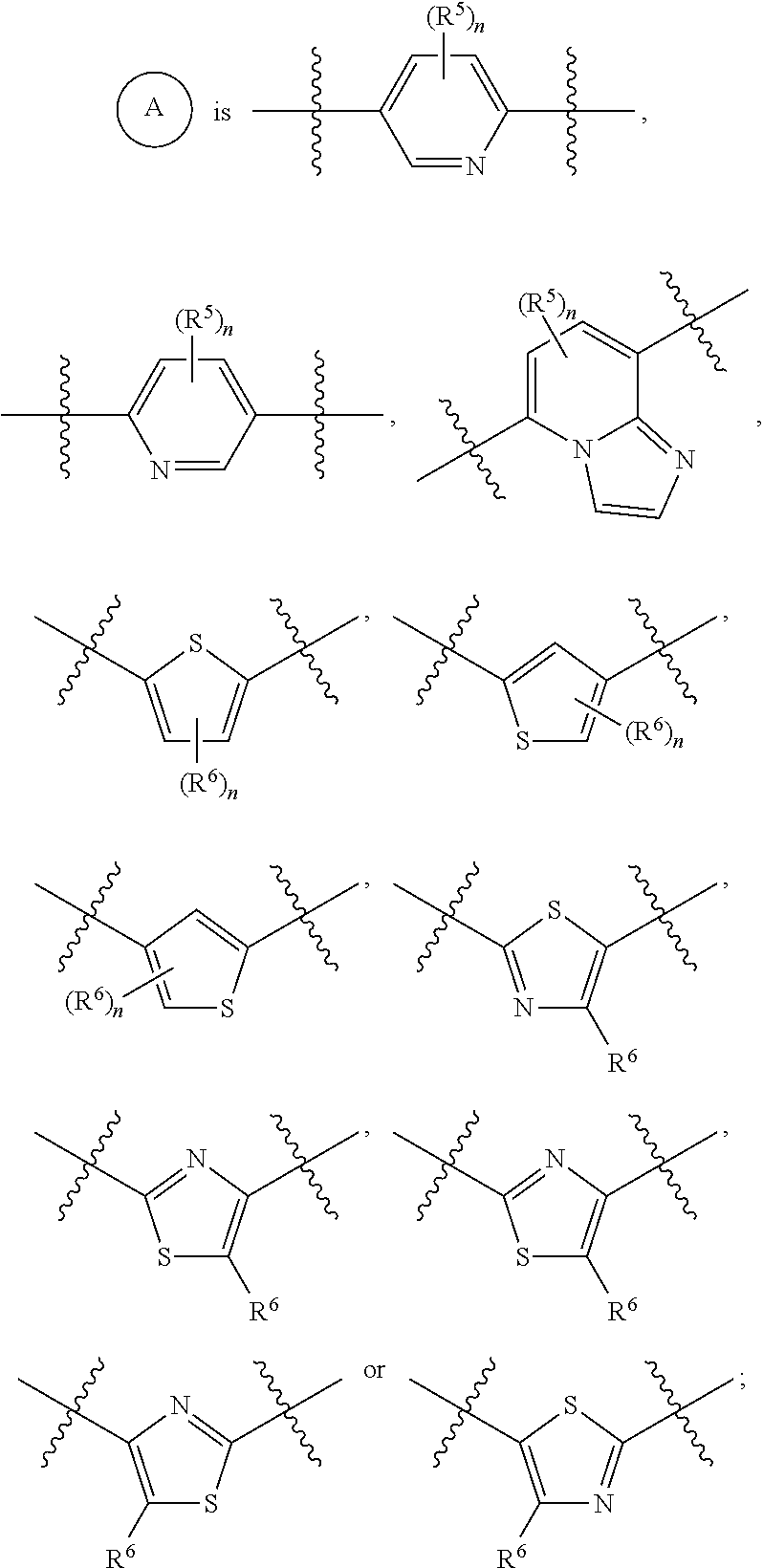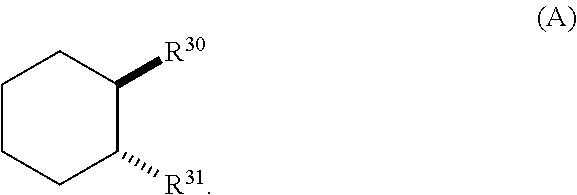Heteroaryl-substituted sulfonamide compounds and their use as therapeutic agents
a technology of substituting sulfonamide and heteroaryl sulfonamide, which is applied in the direction of drug compositions, organic chemistry, nervous disorders, etc., can solve the problems of reducing affecting the excitability of glutamatergic neurons, and affecting the activation and release of gaba of those neurons. to achieve the effect of reducing adverse events and increasing the potency of existing or future drug therapies
- Summary
- Abstract
- Description
- Claims
- Application Information
AI Technical Summary
Benefits of technology
Problems solved by technology
Method used
Image
Examples
example 1
Synthesis of (S)-5-chloro-6-((1-(5-chloro-2-fluorophenyl)ethyl)amino)-N-(thiazol-4-yl)pyridine-3-sulfonamide
[0495]
Step 1. Preparation of tert-butyl ((5,6-dichloropyridin-3-yl)sulfonyl)(thiazol-4-yl)carbamate
[0496]
[0497]To a solution of tert-butyl thiazol-4-ylcarbamate (1.000 g, 4.06 mmol) in anhydrous tetrahydrofuran (13 mL) was added a 1 M solution of lithium bis(trimethylsilyl)amide in tetrahydrofuran (4.5 mL, 4.5 mmol) at −78° C. The reaction mixture was stirred at −78° C. for 30 minutes, allowed to warm to ambient temperature and stirred for 20 minutes. The reaction mixture was cooled to −78° C., and a solution of 5,6-dichloropyridine-3-sulfonyl chloride (0.894 g, 3.63 mmol) in anhydrous tetrahydrofuran (9 mL) was added to it. The reaction mixture was stirred at −78° C. for 30 minutes, allowed to warm to ambient temperature, and stirred for 4 hours. After addition of saturated aqueous ammonium chloride (20 mL), the mixture was extracted with ethyl acetate (3×20 mL). The combined...
example 2
Synthesis of (S)-5-chloro-6-((1-(2-fluorophenyl)ethyl)amino)-N-(thiazol-4-yl)pyridine-3-sulfonamide
[0502]
Step 1. Preparation of tert-butyl (S)-((5-chloro-6-((1-(2-fluorophenyl)ethyl)amino) pyridin-3-yl)sulfonyl)(thiazol-4-yl)carbamate
[0503]
[0504]Following the procedure as described for EXAMPLE 1, Step 2 and making non-critical variations as required to replace (S)-1-(5-chloro-2-fluorophenyl)ethan-1-amine hydrochloride with (S)-1-(2-fluorophenyl)ethan-1-amine, the title compound was obtained as a colorless solid (0.233 g, 47% yield): MS (ES+) m / z 513.1 (M+1), 515.1 (M+1).
Step 2. Preparation of (S)-5-chloro-6-((1-(2-fluorophenyl)ethyl)amino)-N-(thiazol-4-yl)pyridine-3-sulfonamide
[0505]
[0506]Following the procedure as described for EXAMPLE 1, Step 3 and making non-critical variations as required to replace tert-butyl (S)-((5-chloro-6-((1-(5-chloro-2-fluorophenyl)ethyl)amino)pyridin-3-yl)sulfonyl)(thiazol-4-yl)carbamate with tert-butyl (S)-((5-chloro-6-((1-(2-fluorophenyl)ethyl)amino)py...
example 3
Synthesis of (S)-5-((1-(2-fluorophenyl)ethyl)amino)-6-methyl-N-(thiazol-4-yl)pyridine-2-sulfonamide
[0507]
Step 1. Preparation of 6-(benzylthio)-3-bromo-2-methylpyridine
[0508]
[0509]To a solution of benzyl mercaptan (3.69 g, 29.7 mmol) in anhydrous tetrahydrofuran (50 mL) was added sodium hydride (60% dispersion in mineral oil, 1.48 g, 37.1 mmol) in portions at 0° C. The reaction mixture was allowed to warm to ambient temperature and stirred for 1 hour. The reaction mixture was then cooled to 0° C. and a solution of 3-bromo-6-fluoro-2-methylpyridine (4.70 g, 24.7 mmol) in anhydrous tetrahydrofuran (25 mL) was added dropwise. The reaction mixture was allowed to warm to ambient temperature and stirred for 12 hours. After addition of water (200 mL), the mixture was extracted with ethyl acetate (3×200 mL). The combined organic layers were washed with brine (50 mL), dried over anhydrous sodium sulfate, and filtered. Concentration of the filtrate in vacuo and purification of the residue by c...
PUM
| Property | Measurement | Unit |
|---|---|---|
| enantiomeric excess | aaaaa | aaaaa |
| enantiomeric excess | aaaaa | aaaaa |
| enantiomeric excess | aaaaa | aaaaa |
Abstract
Description
Claims
Application Information
 Login to View More
Login to View More - R&D
- Intellectual Property
- Life Sciences
- Materials
- Tech Scout
- Unparalleled Data Quality
- Higher Quality Content
- 60% Fewer Hallucinations
Browse by: Latest US Patents, China's latest patents, Technical Efficacy Thesaurus, Application Domain, Technology Topic, Popular Technical Reports.
© 2025 PatSnap. All rights reserved.Legal|Privacy policy|Modern Slavery Act Transparency Statement|Sitemap|About US| Contact US: help@patsnap.com



